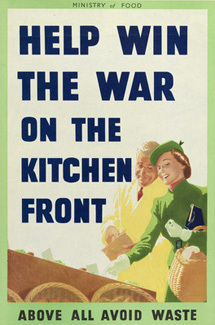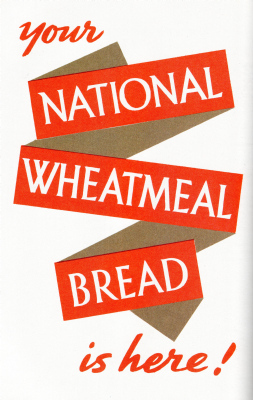Food Rationing in Britain in World War II

Life in Britain was anything but easy during World War II! One thing that made life challenging was rationing.
Great Britain, as an island nation with a large population, has always relied on imports for food and other supplies. Those imports were threatened when Germany conquered western Europe in mid-1940, removing major trade partners—and as German U-boats and surface vessels sank cargo vessels bound for England from the rest of the world.
The first thing rationed in Britain was petrol (gasoline), as of September 22, 1939. Later, paper, clothes, shoes, linens, and even soap were rationed.
Food Rationing in Britain
British ration book for a child, WWII (National Archives UK)
Food rationing started in Britain on January 8, 1940. Each person received a ration book with coupons to be torn out by the grocer. The allowed amounts of all the foods mentioned below fluctuated during the war based on supply.
The first foods rationed in January 1940 were bacon and ham (4 oz per week), butter (4 oz per week), and sugar (12 oz per week). On March 11, 1940, meat was added, with each person over the age of six allotted 1 shilling/10 pence worth per week (about 1 pound), with 11 pence worth for children under six. Chicken, game, fish, sausage, and offal were not rationed.

British poster, 1940 (Imperial War Museum)
Tea—that most British of staples—was added to the list on July 8, 1940 (2 oz per week)—as well as margarine (6 oz per week) and fats (2 oz per week).
To deal with continuing sugar shortages, cakes were not allowed to be iced (frosted) as of August 5, 1940. Jam, marmalade, syrup, and treacle (molasses) were rationed as of March 17, 1941 (8 oz per month), and sweets and chocolates on July 26, 1942 (8 oz per 4 weeks).
Cheese was added to rationing on May 5, 1941 (1 oz per week), and milk and eggs were allocated starting May 28, 1941. Since eggs were so scarce, most people didn’t receive their allocated one egg per week. When US Lend-Lease supplies began arriving in Britain, people began receiving a tin of skim milk powder each month (December 1941) and a tin of dried eggs every two months (June 1942).
The Ministry of Food introduced a point system on December 1, 1941. At first this applied to canned meat, fish, and beans, but later included rice, canned fruit, cereals, and biscuits (cookies).

British ad for National Wheatmeal Loaf, WWII
Bread was never rationed during the war, but the sale of white bread was banned and an unpopular National Wheatmeal Loaf of wheat and potato flour was sold instead.

British Dig for Victory poster, promoting home gardening, WWII
Fruits and vegetables were never rationed, but most were scarce, including onions, tomatoes, and oranges—onions were even used as raffle prizes! Lemons and bananas were completely unavailable. To supplement their rations, people were encouraged to plant “Dig for Victory” gardens and to raise chickens and pigs.

British poster, WWII
Because potatoes and carrots were unrationed and plentiful, the government promoted their use, and they appear in most wartime recipes, substituting for other foodstuffs.

“Potato Pete” poster, British, WWII (Imperial War Museum)
Overall, the rationing system in Britain provided a bland and meager diet, but it ensured that everyone had enough to eat and promoted a “we’re all in this together” mentality.
Which part of food rationing would have been most difficult for you?
The post Food Rationing in Britain in World War II first appeared on Sarah Sundin.


